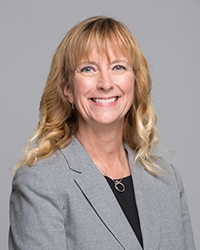U of S takes another step towards building reconciliation
“Education is the key to reconciliation and the time for action is now” were themes that arose from the 2015 ground-breaking national forum on reconciliation hosted by the University of Saskatchewan, involving university and Indigenous leaders from across the country.
By University CommunicationsToday the U of S turned its attention to the contributions it will make in response to the national reconciliation challenge.

The U of S Building Reconciliation Forum gathers together over 300 faculty, staff and student leaders in Marquis Hall to share successes, identify the many steps remaining and to raise awareness of how the whole university community can become involved.
“There is a significant amount of work to do, and our university, situated in Saskatchewan, has an opportunity for tremendous growth in this area,” said Peter Stoicheff, U of S president and vice-chancellor. “And as we continue on this journey of reconciliation, there is a great sense of hope and of potential for change among our faculty, students and staff.”
The one-day forum began with a pipe ceremony and includes four panel sessions focusing on the Indigenous student experience, reconciliation through teaching and learning, re-thinking university governance and structures, and anti-racist research and action. In addition, 60 posters featuring research and programs will be on display in Place Riel for the day, while the entire forum—including the discussion sessions—will be available as a livestream.
Of the 94 calls to action in the Truth and Reconciliation Commission’s final report, at least a dozen can be tied directly to the post-secondary environment.

“There is a long history of working to create an Indigenous future at the U of S and now we have momentum, through the TRC calls to action, to keep the crucial conversations going,” said Patti McDougall, vice-provost of teaching and learning. “We have remarkable people making important progress and there is much knowledge right here at our university. We have a genuine opportunity to become partners in building reconciliation.”
The U of S already has a lengthy list of Indigenous initiatives, academic programs and services across campus that aim to close the education gap. That is particularly important because it has one of the largest Aboriginal student populations in the country, with at least 2,500 First Nations, Métis, and Inuit students currently enrolled, and continues to welcome and graduate more Indigenous students than ever before.
Today’s event is meant to continue conversations at the U of S on how to implement the calls to action, build reconciliation and become the best place it can be for Indigenous students and their communities.

